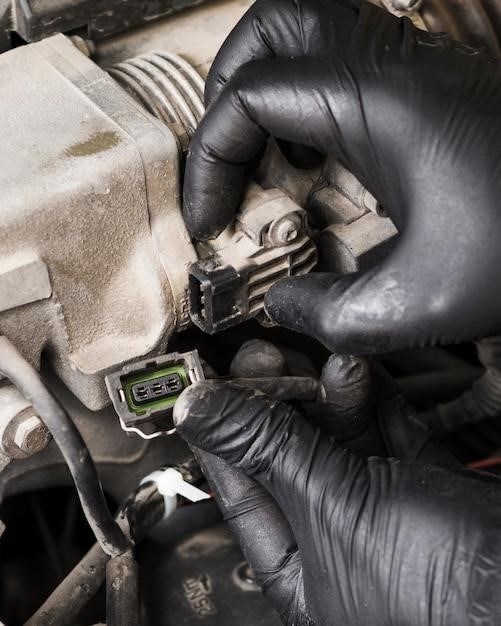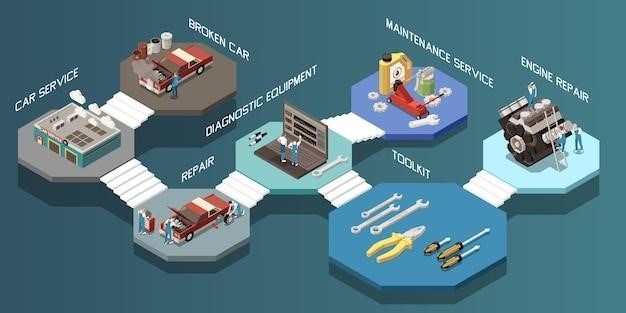This comprehensive guide provides step-by-step instructions for swapping a 4L60E transmission into your vehicle. We’ll cover everything from identifying the right transmission to wiring considerations and common applications. Whether you’re looking to upgrade your classic muscle car or simply need a reliable replacement, this guide has you covered.
Introduction
The 4L60E transmission, a cornerstone of General Motors’ automotive legacy, is a renowned 4-speed automatic transmission known for its durability and performance. It’s a popular choice for enthusiasts seeking to upgrade their classic or modern vehicles, offering a seamless blend of power and efficiency. This guide delves into the intricacies of swapping a 4L60E transmission, providing a comprehensive roadmap for a successful installation. From understanding the history and features of the 4L60E to navigating the swap procedure, this guide is your essential resource for achieving a smooth and reliable transmission upgrade.
History of the 4L60E Transmission
The 4L60E transmission traces its lineage back to the renowned Turbo-Hydramatic 700R4, introduced in 1982. This innovative transmission, known for its overdrive capabilities, laid the foundation for the 4L60E. The “E” in 4L60E signifies “electronically controlled,” distinguishing it from its mechanically controlled predecessor. The 4L60E, introduced in 1993, incorporated electronic control for smoother shifting and enhanced performance. Initially used in trucks, vans, and SUVs, it quickly found its way into rear-wheel-drive passenger cars in 1994, solidifying its position as a versatile and reliable transmission across a wide range of GM vehicles.
4L60E Transmission Features
The 4L60E transmission boasts several features that have contributed to its enduring popularity. Its four forward gears and one reverse gear provide a wide range of gear ratios, enabling efficient acceleration and smooth cruising. The longitudinal mount design is ideal for rear-wheel drive applications, ensuring proper alignment and transmission of power. The 4L60E’s robust construction allows it to handle up to 450 horsepower and 425 ft/lb of torque, making it suitable for a variety of performance applications. Furthermore, the 4L60E’s electronic valve body provides precise control over shift points and firmness, enhancing driving comfort and performance. These features, combined with its proven durability, make the 4L60E a popular choice for enthusiasts and mechanics alike.
4L60E Interchange Guide
Before diving into a 4L60E swap, it’s crucial to understand the nuances of transmission interchangeability. General Motors made significant changes to the 4L60E over its production run, leading to compatibility issues between different years and models. For example, the early integrated bellhousing 4L60Es used in SBC-powered vehicles are readily swappable into older hot rods, while later transmissions with separate bellhousings require additional modifications. The 4L60E’s design evolved throughout the years, with changes to the valve body, torque converter, and other components. It’s essential to consult a comprehensive interchange guide to ensure that the transmission you choose is compatible with your vehicle’s year, model, and engine. This guide can help you avoid potential headaches during the swap process.
Year to Year Swap Guide
When swapping a 4L60E, the year of the transmission plays a crucial role in compatibility. While some years may be direct bolt-ins, others require modifications. For example, a 1994 4L60E can be directly swapped into a 1995 vehicle without any mechanical or electrical changes. However, the PCM (Powertrain Control Module) must be reprogrammed with the 1994 transmission base code to prevent setting a silent code, which may not illuminate the Check Engine Light but is stored in memory. The transmission will operate normally despite this. It’s essential to consult a comprehensive year-to-year swap guide to determine the specific modifications required for your swap. This guide will help you avoid potential issues and ensure a smooth transition.
Identifying 4L60E Transmissions
Identifying the correct 4L60E transmission is paramount for a successful swap. One key characteristic is the bellhousing pattern. Early 4L60E transmissions, often found in small-block Chevy-powered vehicles, feature the traditional small-block six-bolt bellhousing pattern, making them easily identifiable. However, starting in 1996, many 4L60E transmissions transitioned to a bolt-on bellhousing design. All 4L60E transmissions used behind the LS family of engines from 1998 onwards utilize this separate bellhousing style. Additionally, the transmission case itself can provide clues. Early 4L60E cases are considered “shallow,” while later models feature a “deep” case design. Understanding these distinctions will help you pinpoint the correct 4L60E for your application and ensure a seamless swap.
4L60E Swap Procedure
Swapping a 4L60E transmission is a significant undertaking that requires careful planning and execution. The procedure involves removing the old transmission, installing the new one, and ensuring proper alignment and connection; This process will typically involve disconnecting various components, including the driveshaft, exhaust system, and engine mounts. Careful attention must be paid to the transmission mounting points, ensuring that the new unit is securely fastened. While a detailed guide specific to your vehicle is recommended, general steps include disconnecting the old transmission, removing it from the vehicle, installing the new transmission, connecting the driveshaft, exhaust system, and engine mounts, and finally, refilling the transmission fluid.
Step-by-Step Guide
A 4L60E transmission swap is a multi-step process that requires a methodical approach. Begin by disconnecting the battery to prevent electrical hazards. Next, raise the vehicle securely and remove the driveshaft. Disconnect the transmission cooler lines, exhaust system, and any other attached components. Carefully loosen and remove the transmission mounting bolts. Once the transmission is free, carefully lower it and remove it from the vehicle. Installation follows a reverse process, ensuring proper alignment and secure tightening of all bolts. Reconnecting the driveshaft, exhaust system, and other components is crucial for proper operation. Finally, refill the transmission fluid according to the manufacturer’s specifications.
Required Tools and Materials
A successful 4L60E transmission swap requires a well-equipped toolbox and essential materials. Basic tools include a jack, jack stands, wrenches, sockets, screwdrivers, and a torque wrench for precise tightening. You’ll also need a transmission fluid pump, a funnel, and new transmission fluid. A transmission filter and gasket set are essential for a clean and efficient fluid system. Safety gear is crucial, including gloves, safety glasses, and a sturdy work surface. Depending on the specific application, additional tools may be required, such as a transmission cooler line wrench or a transmission removal tool. Having all the necessary tools and materials readily available will ensure a smooth and successful swap.
Wiring Considerations
Wiring considerations are crucial for a successful 4L60E transmission swap. The 4L60E relies on an electronic control unit (TCU) for operation, which requires proper wiring and communication with the vehicle’s electrical system. Matching the TCU to the donor transmission and year of the vehicle is essential. Wiring diagrams for both the donor transmission and the recipient vehicle are valuable resources for connecting the TCU to the transmission, engine, and other vehicle components. If the donor transmission is from a different year or model, modifications to the wiring harness may be necessary to ensure compatibility. Professional help may be required for complex wiring modifications, ensuring correct connections and preventing electrical issues. Proper wiring is essential for the 4L60E to function correctly and provide reliable performance.
Common 4L60E Swap Applications

The 4L60E transmission’s versatility and durability have made it a popular choice for various swap applications. Its compatibility with a wide range of GM engines, including small-block and big-block Chevy engines, makes it a suitable choice for classic muscle cars. Swapping a 4L60E into a Chevrolet Camaro, for example, can provide a significant performance upgrade with its overdrive capability and electronic control. The 4L60E is also a popular option for replacing older transmissions in Chevrolet C10 trucks, offering improved fuel economy and performance. Its robust design can handle the power of V8 engines, making it a reliable choice for towing and hauling. The 4L60E’s popularity stems from its ability to enhance performance and reliability in various vehicles, making it a common choice for enthusiasts seeking a powerful and efficient drivetrain.
Chevrolet Camaro (1994-2002)
Swapping a 4L60E transmission into a Chevrolet Camaro from the 1994 to 2002 model years can be a great way to improve performance and drivability. The 4L60E offers a significant upgrade over the stock transmissions in these cars, providing smoother shifts, increased fuel economy, and a more responsive driving experience. The 4L60E’s overdrive gear allows for relaxed cruising on the highway, while its electronic control system provides precise shift points and enhanced performance. The swap process is relatively straightforward, requiring the removal of the old transmission and installation of the new one; However, it’s important to ensure that the 4L60E is compatible with the engine and other components in the Camaro, and to address any necessary wiring modifications. A successful 4L60E swap can transform a classic Camaro, making it a more enjoyable and capable car to drive.
Chevrolet C10 (1967-1972)
The Chevrolet C10, a popular pickup truck from the 1960s and 1970s, can benefit significantly from a 4L60E transmission swap. The 4L60E provides a modern upgrade over the older transmissions that were originally equipped in these trucks, offering smoother shifting, increased fuel efficiency, and enhanced performance. The swap involves replacing the existing transmission with a 4L60E, which may require some modifications to the transmission mount and driveshaft. Wiring considerations are also important, as the 4L60E is electronically controlled, while older C10s typically used mechanically controlled transmissions. A successful 4L60E swap can transform a classic C10 into a more reliable, drivable, and enjoyable truck for everyday use.
Troubleshooting and Maintenance
Even after a successful 4L60E swap, regular maintenance and troubleshooting are essential for optimal performance and longevity. Common issues include slipping, rough shifting, or complete transmission failure, often due to worn-out parts, low fluid levels, or faulty sensors. Regular fluid changes are crucial to prevent overheating and premature wear. Inspecting the transmission filter and replacing it as needed helps to keep the internal components clean and functioning properly. Diagnosing problems can be challenging, requiring a combination of observation, inspection, and diagnostic tools. Understanding the 4L60E’s operation and common failure points can help you identify and address issues efficiently.
Common 4L60E Problems
The 4L60E transmission, despite its popularity, is not without its share of common problems. One frequent issue is slipping, often caused by worn-out clutches or a failing torque converter. Rough shifting can be attributed to a variety of factors, including dirty fluid, worn-out valve body components, or a faulty solenoid. Complete transmission failure is often the result of severe overheating, causing internal damage to clutches, gears, or the valve body. Other common problems include leaks from worn-out seals, electrical issues related to sensors or the transmission control unit (TCU), and problems with the overdrive gear. Understanding these common issues can help you diagnose and address problems more efficiently.
Fluid Changes and Maintenance
Regular fluid changes are crucial for the longevity of your 4L60E transmission. The recommended interval for fluid changes is every 30,000 miles or two years, but it’s best to consult your owner’s manual for specific guidelines. Using the correct type of transmission fluid is essential. GM recommends using Dexron VI, but older models may require Dexron III. During a fluid change, the filter should also be replaced. In addition to fluid changes, there are other maintenance tasks to keep your transmission running smoothly. Inspecting the transmission pan for leaks, checking the fluid level, and monitoring the transmission temperature are all important. Taking care of these preventative maintenance steps will help you avoid costly repairs down the road.

4L60E Upgrades and Modifications
While the 4L60E is a durable transmission, there are several upgrades and modifications that can enhance its performance and reliability. For increased horsepower and torque handling, consider replacing the stock clutch packs with heavy-duty units. Upgrading the valve body with a performance kit can improve shift firmness and response. A high-flow transmission cooler is essential for keeping the transmission operating at the optimal temperature, especially when subjected to heavy loads or towing. Another important upgrade is replacing the stock torque converter with a high-stall unit, which improves acceleration and reduces engine lugging. For those seeking ultimate control, a standalone transmission control unit (TCU) offers the ability to customize shift points, line pressure, and other parameters. These upgrades can transform your 4L60E into a powerhouse capable of handling even the most demanding driving conditions.
Performance Upgrades
For those seeking to unlock the full potential of their 4L60E transmission, performance upgrades are essential. A high-performance torque converter with a higher stall speed can significantly improve acceleration and reduce engine lugging, especially during heavy towing or high-performance driving. Upgrading the clutch packs with heavy-duty units increases the transmission’s capacity to handle higher horsepower and torque output. A performance valve body kit enhances shift firmness and response, providing a more aggressive and engaging driving experience. Consider replacing the stock transmission cooler with a high-flow unit to ensure adequate cooling under demanding conditions. These upgrades can transform your 4L60E into a reliable and powerful transmission capable of handling even the most extreme conditions.
Transmission Control Unit (TCU) Upgrades
The Transmission Control Unit (TCU) is the brain of the 4L60E, responsible for managing shift points, line pressure, and overall transmission operation. Upgrading the TCU can dramatically enhance performance and drivability. Aftermarket TCUs offer advanced features such as adjustable shift points, line pressure control, and custom tuning options. These programmable units allow you to tailor the transmission’s behavior to your specific driving style and vehicle modifications. For example, you can fine-tune shift points for optimal acceleration or increase line pressure for improved towing capacity. Some aftermarket TCUs even offer integrated features like shift-on-the-fly capabilities and performance logging, providing valuable insights into transmission performance. Upgrading the TCU can unlock hidden potential in your 4L60E, transforming it into a high-performance unit that meets your individual needs.



